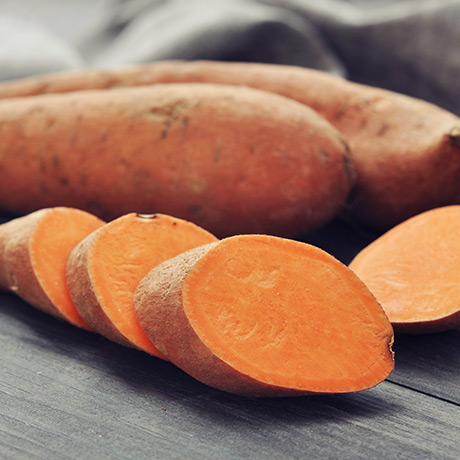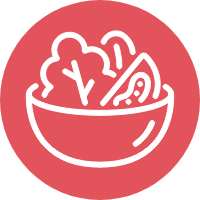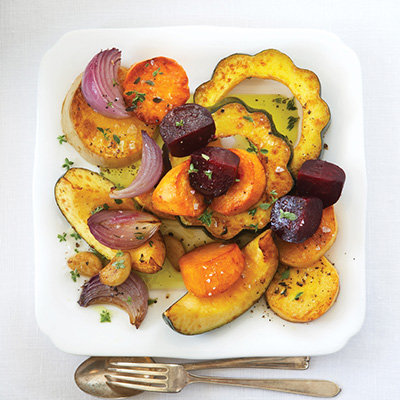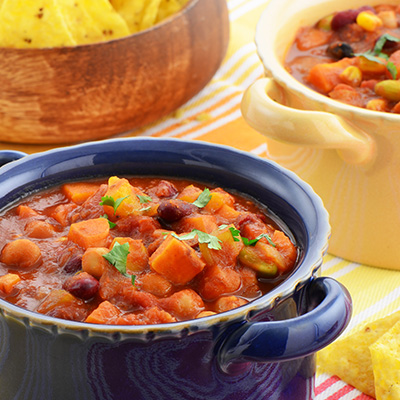- Strawberries
- Cook With Apples
- Grapes
- Grapefruit
- Lemons
- Cabbage
- Asparagus
- All About Bulb Vegetables
- All About Cruciferous Vegetables
- Squash
- All About Root Vegetables
- The Gift of Spice
- Thyme
- Basil
- Raspberries
- All About Tuber Vegetables
- Marjoram / Oregano
- Lemongrass / Citronella
- All Our Fruits, Vegetables and Fresh Herbs
- All About Exotic Fruits
- All About Legumes
- Cooking Pears: Three Inspirational Methods
All About Tuber Vegetables

Tubers grow underground at the plant’s roots and contain its nutrient reserves. They are a good source of potassium, typically starchy and prepared similarly to root vegetables.
Jerusalem artichoke
The Jerusalem artichoke is the root tuber of a species of sunflower native to North America, which was first cultivated by New England Indians. Interestingly, the vegetable has no connection to Jerusalem or to artichokes, and in some places it’s more commonly referred to as sunchoke or winter artichoke.
Characteristics
The Jerusalem artichoke is a knobby tuber that looks a lot like ginger. It is 7 to 10 centimetres long and 3 to 6 centimetres in diameter. Its yellow-white flesh is crunchy, juicy and sweet; its flavour is very delicate. It is covered by a thin beige skin, sometimes tinged with red or purple. The flavour of the Jerusalem artichoke improves with age, particularly if it is picked just before a frost.
Culinary tips and advice
- Look for a firm Jerusalem artichoke that has smooth, dry skin; the more regular its shape, the easier it will be to wash and peel.
- The Jerusalem artichoke can be eaten raw or cooked.
- This vegetable is hard to peel so it is usually brushed thoroughly and cooked without peeling. It is easy to peel once cooked.
- The Jerusalem artichoke can be boiled, steamed or oven-baked, but should not be cooked very long or it will break apart and become pasty.
- It can replace potatoes or water chestnuts in most recipes and pairs well with leeks and poultry.
- Prepared raw, it is delicious served in salads or as an appetizer. It should be sprinkled with lemon juice to prevent it from browning.
Availability
Jerusalem artichokes are available in the produce section of your local Metro supermarket.
Nutritional value
The Jerusalem artichoke is an excellent source of potassium and a good source of iron and thiamine. It also contains niacin, phosphorus, copper, magnesium and folic acid.
Storage life
Stored unwashed in a perforated plastic bag, the Jerusalem artichoke will keep for two weeks in the refrigerator.

Cassava
The cassava, also known as manioc or yuca, comes from Brazil and Southwestern Mexico. It is a staple in the diet of many countries including Africa, Asia, South and Central America.

Characteristics
The cassava has an elongated, conical or cylindrical shape. It measures 20 to 40 centimetres long and is covered with a brown bark. The flesh of the cassava can be white, yellow, pink or red.
Though there are several varieties, there are only two categories: the sweet cassava and the bitter cassava. It is the rich starch of the latter that is used to make tapioca.
Culinary tips and advice
- Choose a firm cassava that shows no sign of mould or stickiness.
- The thick skin of the cassava should show very little damage and emit a pleasant, subtle smell.
- To prepare, peel, cut or grate the cassava and soak in a large quantity of cool water. Then cover and boil.
- Serve the sweet cassava like you would a potato or sweet potato. It can replace both the potato and the sweet potato in most recipes.
Availability
Cassava is available year-round in the produce section.
Nutritional value
The cassava is higher in calories than the potato because it is richer in carbohydrates. It is an excellent source of potassium, Vitamin C, iron and magnesium. It is also a good source of thiamine and Vitamin B6
Storage life
The cassava is fragile and very sensitive to heat and humidity. It will only keep for a few days in the refrigerator.
Sweet potato
Sweet potato consumption dates back a very long time, with proof of its existence dating back over 12,000 years. Contrary to popular belief, the sweet potato, a plant native to Central America, is not a cousin of the potato.
Characteristics
All sweet potatoes have a thin, edible skin; their meaty flesh can be white, yellow or orange. There are 400 varieties of sweet potatoes that can be divided into two categories, those with moist flesh and those with dry flesh. The dry-flesh sweet potato is starchier when cooked.
Culinary tips and advice
- Look for firm, smooth sweet potatoes that feel heavy for their size and have no bruises or signs of sprouting.
- The skin of the sweet potato oxidizes quickly; it should only be peeled at the last minute or soaked in cold water until ready to cook.
- The sweet potato is never eaten raw; it is cooked like the potato.
- If boiling the sweet potato in water, it is preferable not to peel it first because the skin will come off very easily once it is cooked.
- Try cooking the sweet potato in milk instead of water and add herbs and spices for extra flavour.
- It can be grated and used to make cakes and fritters.
- Peeled and sliced very thinly, the sweet potato makes great chips and fries.
Availability
Sweet potatoes are available year-round in the produce section.
Nutritional value
The sweet potato can provide long-lasting energy and is rich in potassium and vitamins A, B complex and C. The deeper the colour of the sweet potato, the higher it is in Vitamin A.
Storage life
Sweet potatoes will keep for 7 to 10 days in a relatively humid, dark and airy environment. If stored in a plastic bag, make sure it is perforated. Cooked sweet potatoes will keep in the refrigerator for a few days.

Yams
The yam is part of the spurge family of liana grown for its fleshy edible rootstock, which yields nutritious starch. It grows mainly in the tropical and subtropical regions of Africa, Asia and America with only one variety, the Chinese yam, growing in a moderate climate. There are 130 varieties of yam, only seven of which are edible; the others are toxic and mostly used in pharmacology.
The yam is the most eaten vegetable in the world. It is a staple food in several countries, most notably South America and the Antilles. The yam is different from the sweet potato with which it is often mistaken in North America.

Characteristics
The yam's skin can vary from white to pink to brown or almost black. It is hard, thick, slightly rough and hairy. The yam has an elongated shape, like the sweet potato, though some varieties are rounder. The yam can weigh up to 20 kilos and reach up to 50 centimetres in diameter. Its flesh is very mild tasting, much like certain varieties of sweet potato, but not as sweet. The yam is rich in starch and contains a mucilaginous substance that makes it sticky. Depending on the variety, when the yam is cooked, it either becomes very creamy or remains slightly firm.
Culinary tips and advice
- Choose a firm yam that has no soft spots or mould.
- Like the potato, the yam is always eaten cooked because it contains a great deal of non-digestible starch.
- Peel the yam, cut in pieces or cubes and blanch for 10 to 20 minutes in boiling salt water.
- Add yam to soups and stews, or grate and use in cakes or breads. It is excellent fried!
- Boiled or puréed, the yam has little very flavour.
- Oven-baking tends to dry out the yam, so best to serve with sauce using this cooking method.
- The yam can be substituted for the sweet potato or the potato in most recipes. Only the smallest yams can be cooked with the skin.
Availability
Yams are available year-round in the produce section.
Nutritional value
The yam is an excellent source of potassium. It’s also rich in vitamins C and B6, thiamine, copper, folic acid, magnesium.
Storage life
Store yams in a cool, dark, dry, airy location. Yams will spoil faster at higher temperatures; do not store in a plastic bag which will create moisture.


















